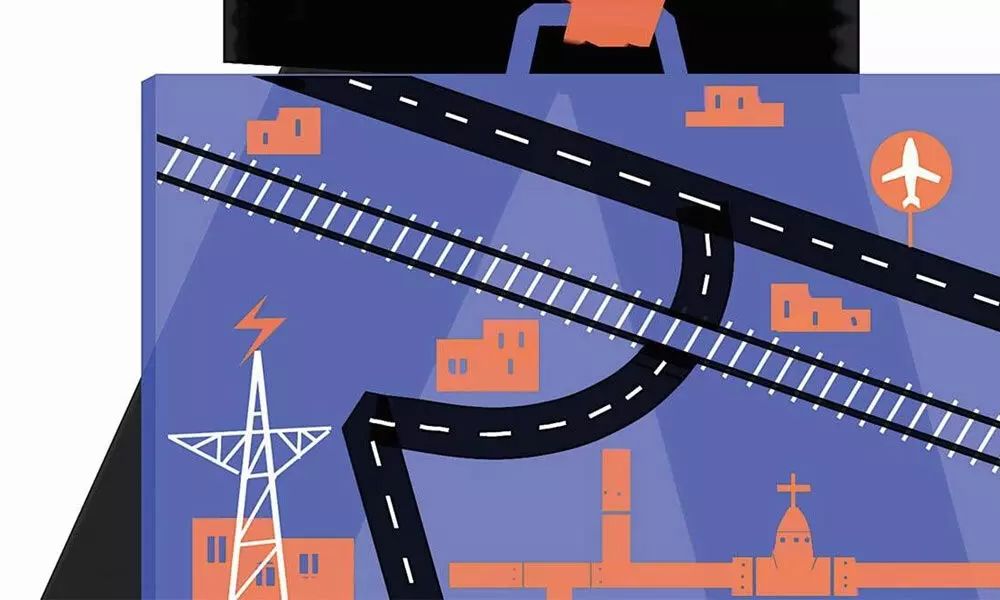Will PSU monetisation help face fiscal crunch?

Will PSU monetisation help face fiscal crunch?
Amid the crisis caused by Covid-19 pandemic when different countries are evolving strategies to revive the economy, India is working on its own tactic – monetisation policy announced by the NDA government led by Narendra Modi early this year.
Amid the crisis caused by Covid-19 pandemic when different countries are evolving strategies to revive the economy, India is working on its own tactic – monetisation policy announced by the NDA government led by Narendra Modi early this year. In the budget 2021-2022 introduced in February 2021, it announced disinvestment and monetisation policy mainly to steer the economy.
The policy is in two forms —Asset Monetisation and National Monetisation Pipeline.
In the asset monetisation, the government is basically transferring revenue rights to private parties for a specified transaction period in return for upfront money, a revenue share, and commitment of investments in the assets. Real estate investment trusts (REITs) and infrastructure investment trusts, for instance, are the key structures used to monetise assets in the roads and power sectors.
This, the government plans to do in a period of three years till 2024. The government is not developing new land for private sector; rather it is the old and existing assets and undertakings that the government plans to utilise now. It is merely the brownfield projects where investments have already been made, where there is a completed asset which is either languishing or it is not fully monetized or is under-utilized. This, the government says, will provide extra money into the exchequer but it remains to be seen how this happens.
Initially, it was decided not to open airports and railways to private sector but the unprecedented lock down losses ticked the government to think otherwise. Going by the figures, the estimated amount to be raised through monetisation is around 14 per cent of the proposed outlay for the Central government of Rs 43 lakh crore under the NIP.
As per the information available, the assets on the NMP list include: 26,700 km roads, railway stations, train operations and tracks, 2.86 lakh Ckt km power transmission lines, 6 GW hydroelectric and solar power assets, 2.86 lakh km fibre assets and 14,917 towers in the telecom sector, 8,154 km natural gas pipelines and 3,930 km petroleum product pipelines.
In the roads sector, the government has already monetised 1,400 km of national highways worth Rs 17,000 crore. Another five assets have been monetized through a PowerGrid InvIT raising Rs 7,700 crore. Furthermore, 15 railway stations, 25 airports and the stake of central government in existing airports and 160 coal mining projects, 31 projects in 9 major ports, 210 lakh MT of warehousing assets, 2 national stadia and 2 regional centres, will be up for monetization. Redevelopment of various government colonies and hospitality assets including ITDC hotels is expected to generate Rs 15,000 crore.
Effects of monetisation
It is too early to decide on the effects of the monetisation but, however from the past experiments, some of the effects of post monetisation on other sectors of the economy can be reported. The economic and business experts have also opined few things.
For instance, as most of the projects selected for monetization fall under the central government, there is less political risk and hence it can be expected that global investors may feel interested. The present plan of asset monetisation may hopefully help the economy steer out of the shock it experienced due to Covid-19. Various reports have predicted healthy recovery of the Indian economy.
The asset monetisation plan of the government is expected to provide strength to this effort and bring India out of the clutches of downturned economy and revive it.
The ultimate objective of NMP is to enable accelerated infrastructure creation and modernisation of services for a multiplier impact on the economy. This includes improved productivity and efficiencies due to higher utilization of assets, synergies and economies of scale and new infrastructure creation. This, in turn, will spur growth both on account of fulfillment of existing demand, as also due to incremental economic activity induced through such investment.
Moving further, in terms of employment creation and opportunities, this will create avenues for skilled and unskilled labour in O&M of assets, construction of assets etc. Hence, it will create employment opportunities across the eco-system. In quantitative terms, the impact is expected to be higher than pure infrastructure creation, given the multi-fold purview of the plan. There is a likelihood that it is going to boost up the economy.
Moreover, since the central government has also pushed the state governments to follow the suit, the State entities have wide range of assets and can open up infrastructural lineage and create more assets.
What are the challenges?
Some of the key challenges facing the proper implementation of NMP are lack of identifiable revenue streams in various assets, level of capacity utilisation in gas and petroleum pipeline projects, dispute mechanism, regulated tariffs in power sector assets, among other issues.
Thus, the disposition of public utilisation may also take the form of a long-term lease, known as concession agreement. There are several viable commercial models to facilitate this objective through adequate upfront premiums, regular revenue shares, standard service delivery parameters with defined penalties and termination clauses in the contract. Then, clarity over tariff setting and concession period of long duration is essential to motivate the private sector to create assets of national importance.
The bidding process needs to be structured correctly to achieve a win-win scenario for all; the government, the investor and the public. In cases where government is resorting to international competitive bidding, it is important to protect foreign investors from long-drawn litigations by setting clear rules and guidelines.
If rightly done well before the due date, then the monetisation effort can have positive impact on economy. It can, to an extent, take out Indian economy from the realms of unfinished GST and failed demonetization. It can also prove to be an asset in attracting foreign direct investment.














